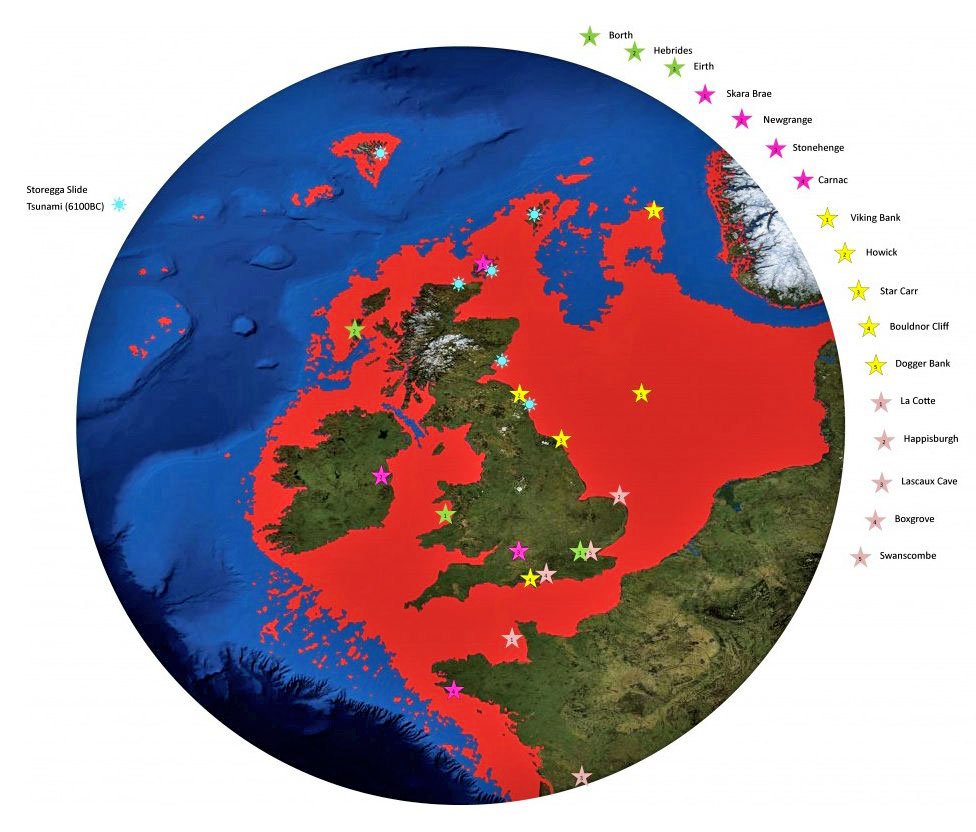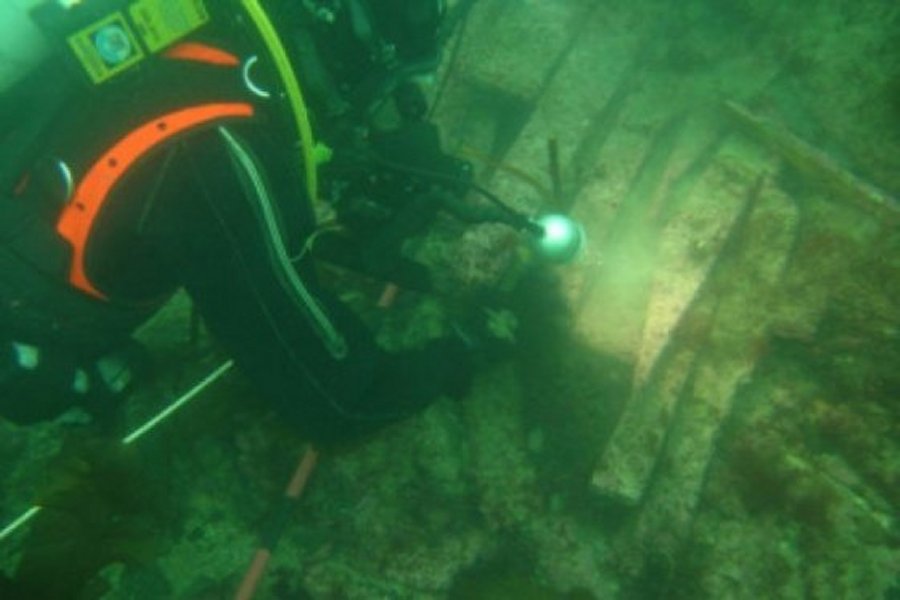MessageToEagle.com – Doggerland was once considered the real heartland of Europe until sea levels rose to give us the UK coastline of today.
What was life in ancient Doggerland?
Doggerland was a huge area between Northern Scotland, Denmark and the Channel Islands.

It was believed to have been home to tens of thousands of people before it disappeared underwater, swallowed up into the North Sea thousands of years ago.
“The name was coined for Dogger Bank, but it applies to any of several periods when the North Sea was land,” says Dr. Richard Bates of the University of St Andrews.
“Around 20,000 years ago, there was a ‘maximum’ – although part of this area would have been covered with ice.
When the ice melted, more land was revealed – but the sea level also rose.

Through a lot of new data from oil and gas companies, we’re able to give form to the landscape – and make sense of the mammoths found out there, and the reindeer.
“We’re able to understand the types of people who were there,” Dr. Bates said.
Fossilized bones from a mammoth also show how this landscape was once one of hills and valleys, rather than sea.
“It has been described as a Stone Age Atlantis – a starry-eyed image of a drowned lost kingdom. But it was certainly a land that would have been heavily populated and it has been lost.”
It is a lost world that was probably completely covered by the sea between 8,000 and 10,000 years ago when island Britain was formed.
“The people who used this lost landscape were hunter gatherers, and North Sea fishermen are still dredging up artefacts from Doggerland – mammoth teeth, antlers, some which have been worked – and the tools that the humans used, including harpoons and axes and pieces of flint”
“At the exhibition, we have some of the genuine artefacts, including animal teeth and bones, and full-sized replicas of the hunting harpoons, spears, fish prongs and fire-starting kits, which the public will be able to handle,” Dr. Bates said.
He continued: “Doggerland was the real heartland of Europe until sea levels rose to give us the UK coastline of today. We have speculated for years on the lost land’s existence from bones dredged by fishermen all over the North Sea, but it’s only since working with oil companies in the last few years that we have been able to recreate what this lost land looked like.”
“When the data was first being processed, I thought it unlikely to give us any useful information, however as more area was covered it revealed a vast and complex landscape.
“We have now been able to model its flora and fauna, build up a picture of the ancient people that lived there and begin to understand some of the dramatic events that subsequently changed the land, including the sea rising and a devastating tsunami, Dr. Bates said.
Dr. Bates also pointed out that people seem to think rising sea levels are a new thing – but it’s a cycle of Earth history that has happened many many times.
MessageToEagle.com
source: University of St. Andrews






